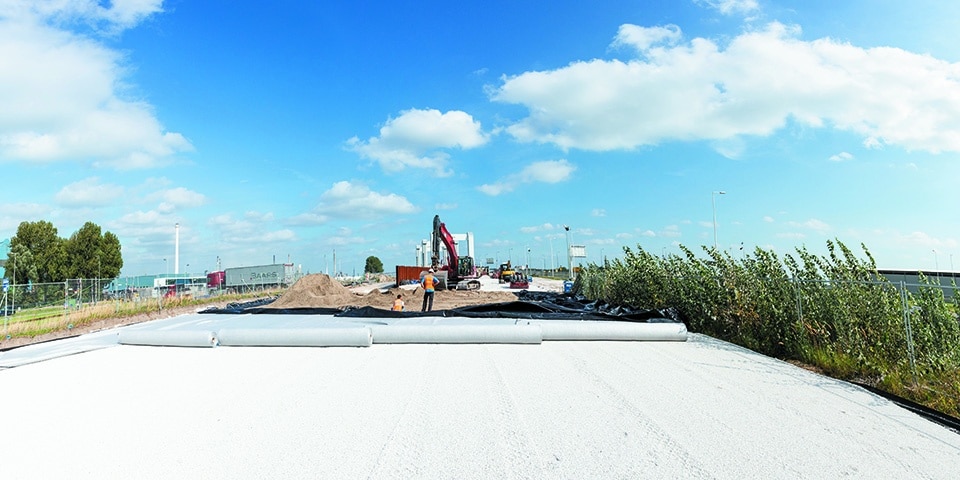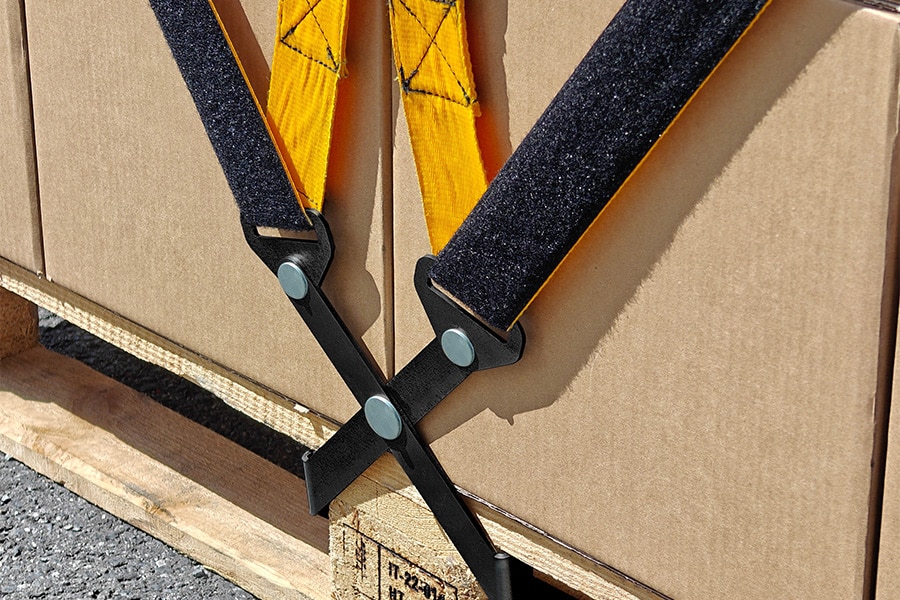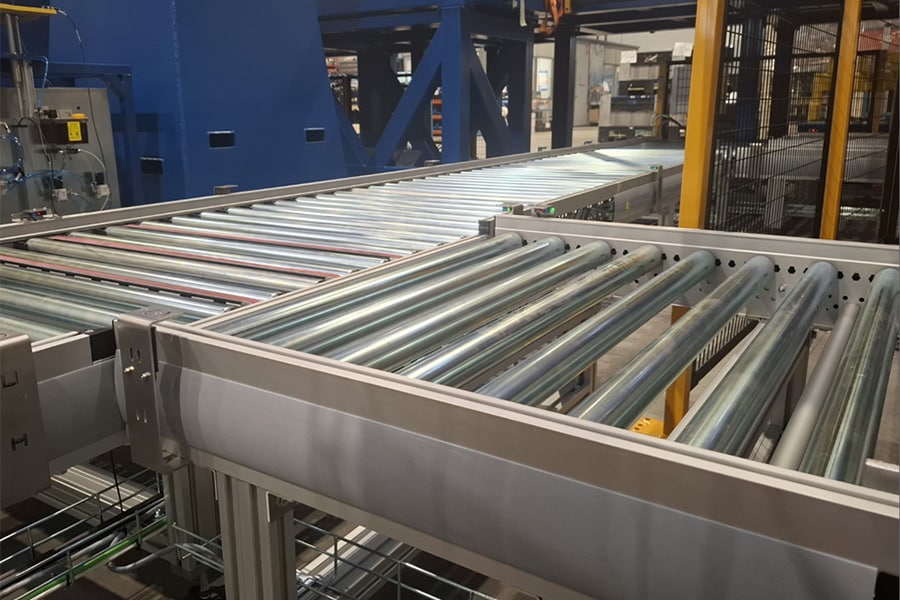
Deployment of bims in reinforced soil construction for track is unique in the Netherlands
The old Botlek Bridge has been demolished, the new one has been built. Car traffic, cyclists and pedestrians have been using it for a while now, only the railroad had to be connected to the port railroad network. A job in which account had to be taken of the underlying Botlek tunnels for rail and car traffic, as well as vulnerable industrial pipelines. An additional challenge: the unstable subsoil.
Reason for Arcadis to ask Joosten Concepts partner Geologics to design the connection. The solution offered is unique for railroad construction: the choice was made to use bim to build a reinforced soil structure. This feather-light but extremely stable foundation material, with excellent water permeability, was used on both the west and east sides.
Looking to the future
Two sheet pile walls were driven on the east side of the future track, one on the west side, the other side is embankment. By means of applying a formwork that moved with the construction of the strata, direct pressure on the sheet piles was prevented in case of slight settlement of the structure. The empty space was filled with uncompacted bim, to prevent pests and vegetation and give space for the construction to expand. The absolute plus here, is that this method of construction allows for the removal of the sheet piles and excavation of the area in the event of new development in the area, without affecting the sub-base construction.
Optimal protection
The layers of bims were reinforced with Tensar's RE Geogrids. In addition, a Tensar SS20 Geogrid was applied for mechanical stabilization, in an optimized version 90 centimeters thick. bims is stronger than sand, but can shatter under high pressure. A pressure-spreading, top sand layer should counteract this. The sand layer itself is separated from the bims by HDPE film to prevent deterioration due to moisture penetration or contamination. A Polyfelt TS non-woven geotextile from TenCate again lies under the foil for protection. An RE grid directly on the foil must prevent the sliding of sand; this RE grid is also incorporated in the next two to three layers of sand, as reinforcement.
The project was carried out by Joosten Concepts partners, Molhoek-CCT and Loonbedrijf Van Etten. Materials come from Joosten Plastics in collaboration with TenCate and Tensar.



